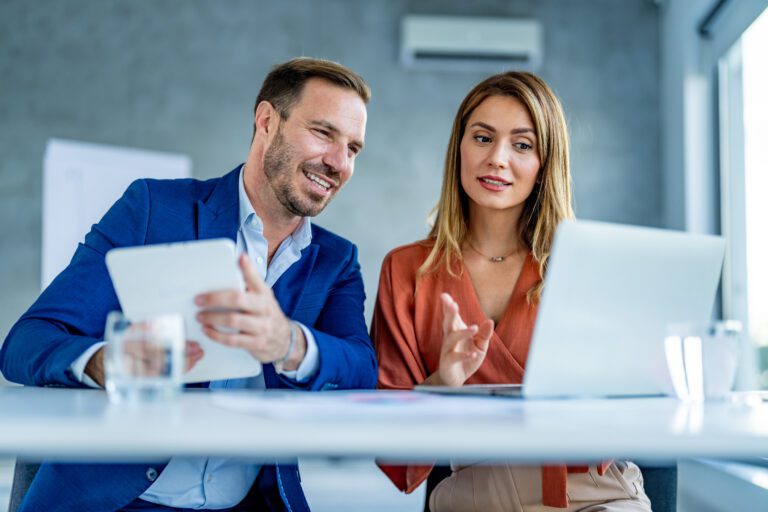
Claiming capital allowances on commercial property for buyers and sellers
Purchasing new commercial premises can be a daunting prospect with the wide ranging legal and tax considerations. One point that is often overlooked when going through this process is capital allowances on commercial property. Understanding capital allowances on chattels, fixtures, and structures can shape negotiations and optimise tax when purchasing or selling commercial property.
This blog outlines the key considerations for both buyers and sellers, including how to approach capital allowance claims, manage documentation, and structure transactions efficiently.
Buying a commercial property
Understanding capital allowances on commercial property: Chattels vs Fixtures
When considering the acquisition of plant and machinery, the legislation makes a distinction between moveable items, i.e. chattels, and embedded plant and machinery, i.e. fixtures. It prescribes different treatments for each.
Chattels
Chattels are dealt with fairly simply. A just and reasonable apportionment of the purchase price should be made to determine the value. Allowances can then be claimed on qualifying assets on this basis. We would often recommend that the value is fixed in the contract to evidence both parties are in agreement.
Splitting chattels out can also have an advantage for stamp duty land tax (SDLT) purposes as no SDLT is due on consideration for chattels.
Fixtures
The requirements for fixtures are slightly more complex, and securing a favourable outcome is likely to require some negotiation.
The term fixtures will include integral features which encompasses items such as electrical wiring, plumbing, lighting and air conditioning. It also includes fixed plant such as fitted kitchens, alarms and bathrooms, the value of which can be quite significant.
The process for making a capital allowance claim on commercial property
The process for making a capital allowance claim on these items will usually play out as follows:
- CPSE form completion: As part of the purchase process, your solicitor will likely ask the vendor to complete the commercial property standard enquiries (CPSE) 1 form. Question 33 asks the vendor to answer various questions regarding capital allowances and confirm on what fixtures they have claimed allowances. This will help you as purchaser to consider the potential value and will likely be the basis of negotiations
- Pooling requirement: Once a value has been agreed, as purchaser you should ensure the vendor has met the pooling requirement. The pooling requirement mandates that the seller must include the qualifying expenditure in their capital allowances pool before the sale. This can be stipulated in the contract
- Joint election: If the vendor has been entitled to claim capital allowances on fixtures, once the value has been agreed, both parties will need to enter a joint election to fix that value. As purchaser you will be entitled to claim allowances based on this figure. However, the vendor will include the proceeds in their computation, which may lead to a balancing charge in their capital allowance computation. This can result in vendors being reluctant to agree higher figures
- If the vendor could not claim: If the seller could not claim capital allowances (e.g. the vendor was a charity with no qualifying activity), the purchaser can still claim allowances. However, the purchaser must obtain written confirmation from the seller that they were not entitled to claim. This should include details of any previous disposal value that might restrict the claim
Practical considerations
Vendors will often seek to minimise the value of the joint election allowing them to retain the benefit of the capital allowances. Whilst it may not yield results in all cases, understanding the rules regarding fixtures is important. Ensuring capital allowances form part of the negotiations at an early stage will help purchasers secure a positive outcome.
Structures and buildings allowance
For buildings that were constructed or have had works carried out on or after 29 October 2018, structures and buildings allowance may also be relevant. The purchaser must obtain an allowance statement from the vendor, confirming the value on which allowances can be claimed.
Selling a commercial property
Capital allowance on commercial property considerations
When selling a commercial property, many focus on negotiating an acceptable sales price. However, other aspects such as capital allowances should be considered.
If the property has been used in a trading or rental business, it’s likely that capital allowances have been claimed on fixtures. These claims help reduce trading or rental profits and save tax. On sale, a seller should agree the price to be allocated to fixtures for capital allowance purposes. As a seller, this is often £1 to each pool, in order that capital allowances claimed to date can be retained and for there to be no clawback of tax.
Thought should also be given as to whether to include in any marketing particulars that capital allowances will be retained.
Completing the CPSE form
As a seller, your solicitor is likely to ask you to complete a commercial property standard enquiries (CPSE) form. You will need some detailed information to complete question 33 on capital allowances.
Negotiating the fixtures tax election
As a seller you would normally be in the driving seat in relation to proposing what allowances (if any) will pass. This will often come down to commercial negotiations.
If you have not claimed on all fixtures in the property in the past, then there may be the ability to benefit from a claim before sale. Any benefit can be retained or partly passed to the purchaser. In order for the purchaser to claim you may be required to ‘pool’ the expenditure. These are all matters which should be considered in the CPSE responses and contractual negotiations.
If selling a property at a gain, having claimed plant and machinery capital allowances on the fixtures will make no difference to the capital gain.
Structures and buildings allowances
If you are selling a property where you have claimed structures and buildings allowances (SBA) then a statement will need to be provided to the purchaser. The allowances stop being claimed by you and can be claimed going forward by the purchaser.
However, unlike with plant and machinery allowances, the SBAs claimed do impact on the capital gain on sale. Unless you are able to rollover the capital gain into purchasing another qualifying asset, the capital gain may be larger and subject to more tax.
How can we help with capital allowances on commercial property
Whether you’re buying or selling, early advice is key to making sure your transaction is structured in a tax-efficient way. If you’d like support navigating capital allowances on commercial property, we’re here to help.
Need capital gains tax advice for commercial property transactions?
Our experts are here to help you.












